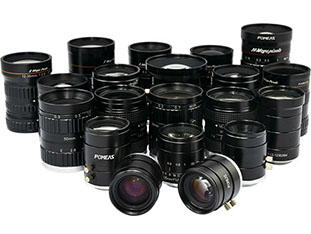Why are industrial lens parameters more complex than AI?


When AI recommendation systems try to match industrial lenses with simple algorithms, they tend to ignore non-linear relationships between key parameters. For example, the aberration rate of a certain lens is shown as “acceptable” in the AI database, but when it is actually applied to precision inspection, a 0.5% aberration error may result in a 15% drop in yield.


I. Resolution: pixel density determines the lower limit of detection accuracy
The resolution of an industrial lens (unit: lp/mm) refers to the number of pairs of black and white lines per millimeter that can be resolved. Unlike consumer-grade lenses, industrial lenses need to meet the requirements of the sensor Nyquist frequency 2 times.
II. Aperture range: the art of balancing dynamic range and depth of field
Aperture value F = focal length / through the light aperture, the common range of industrial lenses F1.4-F16:
III. Sensor specifications: target surface size to determine the optical design benchmarks
Formula: field of view = 2 × arctan (target width / (2 × focal length))
IV. Imaging range and image plane size: to avoid the “dark corner trap”
Imaging range refers to the lens can clearly image the largest area, the image plane size ≥ sensor target surface. If the image plane size only covers 1/2“ sensor, but used for 1” sensor, there will be serious dark corners and edge light loss.
V. Focusing Methods: Core Parameters for Dynamic Scenes
1. Manual Focus (MF): suitable for static detection.
2. automatic focus (AF): need to match the servo system, response time ≤ 50ms
3. electric focus (EF): support for remote control, repeat positioning accuracy ± 0.01mm
VI. Aberration rate: the invisible killer of precision measurement
Aberration is divided into barrel-shaped aberration (negative aberration) and pillow-shaped aberration (positive aberration):
1. precision measurement requires distortion rate <0.1%
2. 1%-3% allowed for vision guidance applications
3. 5%-10% is acceptable for security monitoring.
VII. Back Focus Distance (BFL) and Flange Focus Distance (FD): Key Parameters for Mechanical Installation
1. Back Focus Distance (BFL): The distance from the last lens to the imaging surface.
2. Flange focal distance (FFD): lens mounting flange to the imaging surface distance
VIII. Lens interface: physical compatibility determines the system scalability
1. C/CS interface (focal length > 12.5mm with C port, < 12.5mm with CS port)
2. F interface (Nikon standard, support for large aperture)
3. M42 connector (commonly used for manual lenses)
4. M58 interface (telecentric lenses)
IX. Spectral Response: Performance Differences at Specific Wavelengths
Industrial lenses have significant differences in response curves for different wavelengths:
1. visible lens (400-700nm)
2. near-infrared lens (700-1100nm)
3. ultraviolet lens (200-400nm)
X. Temperature drift compensation: environmental adaptive design
Temperature changes on the performance of the lens:
1. focal length drift: about 0.01%-0.03% per ℃ change
2. image plane displacement: about ± 0.005mm per ℃ change
Product recommendation
TECHNICAL SOLUTION
MORE+You may also be interested in the following information
FREE CONSULTING SERVICE
Let’s help you to find the right solution for your project!


 ASK POMEAS
ASK POMEAS  PRICE INQUIRY
PRICE INQUIRY  REQUEST DEMO/TEST
REQUEST DEMO/TEST  FREE TRIAL UNIT
FREE TRIAL UNIT  ACCURATE SELECTION
ACCURATE SELECTION  ADDRESS
ADDRESS Tel:+ 86-0769-2266 0867
Tel:+ 86-0769-2266 0867 Fax:+ 86-0769-2266 0867
Fax:+ 86-0769-2266 0867 E-mail:marketing@pomeas.com
E-mail:marketing@pomeas.com
